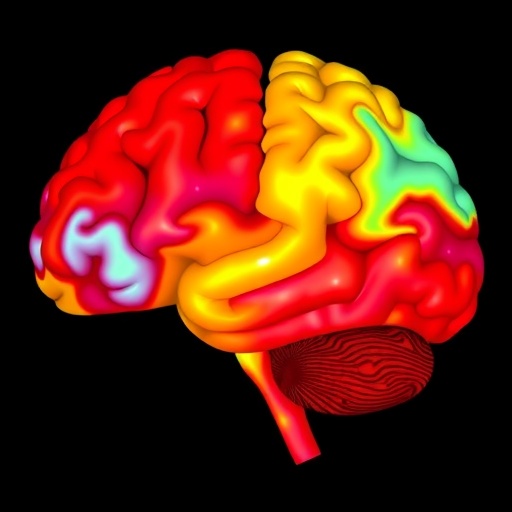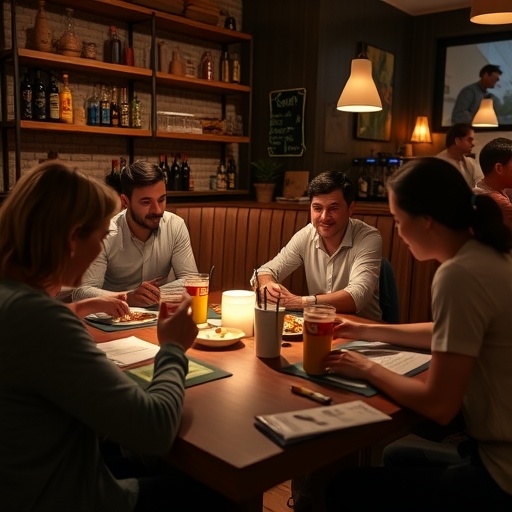In a groundbreaking advancement that reshapes our understanding of the brain’s resting state, neuroscientists have unveiled a novel analytical approach that peels back the layers of neural activity to reveal more nuanced individual differences. For decades, resting-state functional magnetic resonance imaging (fMRI) has been prized for its ability to track brain connectivity when subjects are not engaged in specific tasks. These scans typically highlight large-amplitude coactivation patterns—robust synchronies across brain regions that have been thought to encapsulate the brain’s foundational functional architecture. Yet, while these dominant patterns anchor much of our current neuroscience exploration, they represent just the tip of the iceberg.
Emerging from the latest study is a compelling method called “caricaturing,” designed to surgically subtract these prevailing coactivation signatures from resting-state data, thereby illuminating the subtler and often overshadowed neuronal signals beneath. This technique does not merely filter noise; instead, it projects the resting-state measures into a mathematical subspace orthogonal to a manifold—that is, a curved multi-dimensional space—constructed from task-related coactivation patterns gathered from extensive neuroimaging databases. By removing the linear combinations of these task-derived activations, the residual resting-state signals, termed “caricatured connectomes,” expose unique individual neural fingerprints that standard analyses might overlook.
The research team harnessed task data from two large-scale neuroimaging consortia, merging thousands of participants’ brain activation maps to define a comprehensive manifold of task coactivation patterns. This manifold acts like a neural template representing the dominant, large-scale coactivations typical during active cognitive engagement. By projecting resting-state data away from this template, they effectively wiped clean the slate of known activation patterns, uncovering a latent signal previously masked by the overwhelming dominance of these neural symphonies.
What makes this approach striking is how caricatured connectomes contrast with traditional mappings. While conventional resting-state connectomes facilitate the understanding of broad functional connectivity, caricatured versions exhibit notably reduced similarity across different individuals. This seemingly paradoxical outcome—lower between-individual similarity—translates into enhanced identifiability. Put simply, these stripped-down connectomes are better at distinguishing one person’s unique brain signature from another, promising powerful applications in personalized neuroscience.
Beyond pure identification, the study demonstrated that caricatured connectomes hold superior predictive power for phenotypic measures, which reflect behavioral and cognitive individual differences. These phenotypes, ranging from personality traits to cognitive capacities, are notoriously difficult to map directly onto brain data due to inter-subject variability and noise. Yet, by emphasizing subtle neural cues unclouded by dominant coactivations, the researchers unlocked a richer vein of brain-behavior relationships. This predictive robustness suggests the intrinsic functional architecture of the brain is more intricate and personal than previously assumed.
This paradigm shift challenges long-standing neuroscience conventions that primarily account for high-amplitude coactivation patterns as the main drivers of functional connectivity during rest. The caricaturing method reveals that these prominent patterns, often resembling task engagement, are not the whole story. Beneath these well-identified signals lies a more complex and individualized neural landscape, one that may better encapsulate the brain’s true resting physiology and its variations across individuals.
Technically, this study leverages advanced mathematical projections onto orthogonal subspaces, a method rooted in linear algebra and manifold learning, to achieve signal separation. By defining a task coactivation manifold, the researchers constructed a multidimensional surface representing task-specific brain patterns and devised an algorithm to subtract the influence of this manifold from resting-state data. Such an approach elegantly navigates the high-dimensional complexity of functional neuroimaging data and allows extraction of residual signals that are otherwise obscured.
The implications for neuroscience research and clinical applications are profound. Personalized neuroimaging biomarkers derived from caricatured connectomes could revolutionize diagnostic precision and therapeutic targeting in neuropsychiatric conditions. Diseases like depression, schizophrenia, and autism spectrum disorders are notoriously heterogeneous at the neural level; being able to isolate individual-specific brain features apart from generic coactivation patterns may provide new stratification tools or predictive indices of treatment response.
Moreover, this refined view of resting-state brain function invites a re-examination of neuroscientific theories on intrinsic brain activity. The prevailing models conceptualize resting-state networks as neural ensembles that maintain baseline readiness and underpin cognitive functions. However, if large-amplitude coactivations mirror task-like states present at rest, the true “resting” brain might be defined by these lower-amplitude, more idiosyncratic signals. Understanding these signals could illuminate fundamental neural processes sustaining cognitive flexibility and resilience.
The approach also raises intriguing questions about the nature of resting-state variability. Is the individual distinctness revealed by caricatured connectomes driven by stable underlying traits, transient mental states, or a combination of both? Follow-up longitudinal studies could parse this variance and clarify how these neural signatures evolve over time and under different conditions, deepening insights into brain plasticity and mental health.
Additionally, the study’s use of large pooled datasets marks a milestone in leveraging big data for neuroscientific discovery. Integrating task-derived coactivation patterns from multiple cohorts enabled construction of a robust manifold, emphasizing the value of collaborative data sharing and harmonized methodologies. As more datasets become publicly available, refining and extending the caricaturing approach could further unravel the architecture of brain connectivity.
Limitations remain, however. While the caricaturing method effectively diminishes task-related coactivation influence, it is inherently a linear projection technique, leaving open questions about nonlinear interactions that may also sculpt the resting-state landscape. Future research exploring nonlinear manifold learning or deep learning approaches may capture richer complexity and enhance disentanglement of neural signals.
Nonetheless, this innovative technique is already poised to augment how neuroscientists conceptualize intrinsic brain organization. By compelling researchers to look beyond dominant coactivation patterns and embrace the subtler interplay of neural signals, caricatured connectomes offer a novel lens through which to view the human brain’s resting enigmas.
In sum, Rodriguez, Noble, Camp, and colleagues have charted a bold new course in brain connectivity research. Their development of connectome caricatures transcends traditional resting-state analysis, unveiling hidden layers of individual differences concealed beneath widely accepted coactivation patterns. This breakthrough not only advances methodological frontiers but also opens fresh avenues for personalized neuroscience and mental health diagnostics, standing as a compelling testament to the rich complexity of our intrinsic brain function.
As the field embraces this novel perspective, the caricaturing approach promises to spark a wave of studies dissecting the fine-scale individuality embedded in brain networks. The capacity to distill personalized neural “thumbprints” from the resting brain could redefine the future of brain imaging, diagnostics, and our fundamental understanding of mental life itself.
Subject of Research:
Resting-state functional connectivity in the human brain; novel methods for isolating individual-specific neural signals beyond large-amplitude coactivation patterns.
Article Title:
“Connectome caricatures remove large-amplitude coactivation patterns in resting-state fMRI to emphasize individual differences.”
Article References:
Rodriguez, R.X., Noble, S., Camp, C.C. et al. Connectome caricatures remove large-amplitude coactivation patterns in resting-state fMRI to emphasize individual differences. Nat Neurosci (2025). https://doi.org/10.1038/s41593-025-02099-7
Image Credits:
AI Generated
DOI:
https://doi.org/10.1038/s41593-025-02099-7
Tags: advanced neuroimaging techniquesbrain functional architecturecaricaturing method in neurosciencefMRI individual differencesfunctional magnetic resonance imaging advancementslarge-amplitude coactivation patternsmathematical subspace in neuroscienceneural activity analysisresidual resting-state signalsresting-state brain connectivitytask-related coactivation patternsunique individual neural fingerprints





